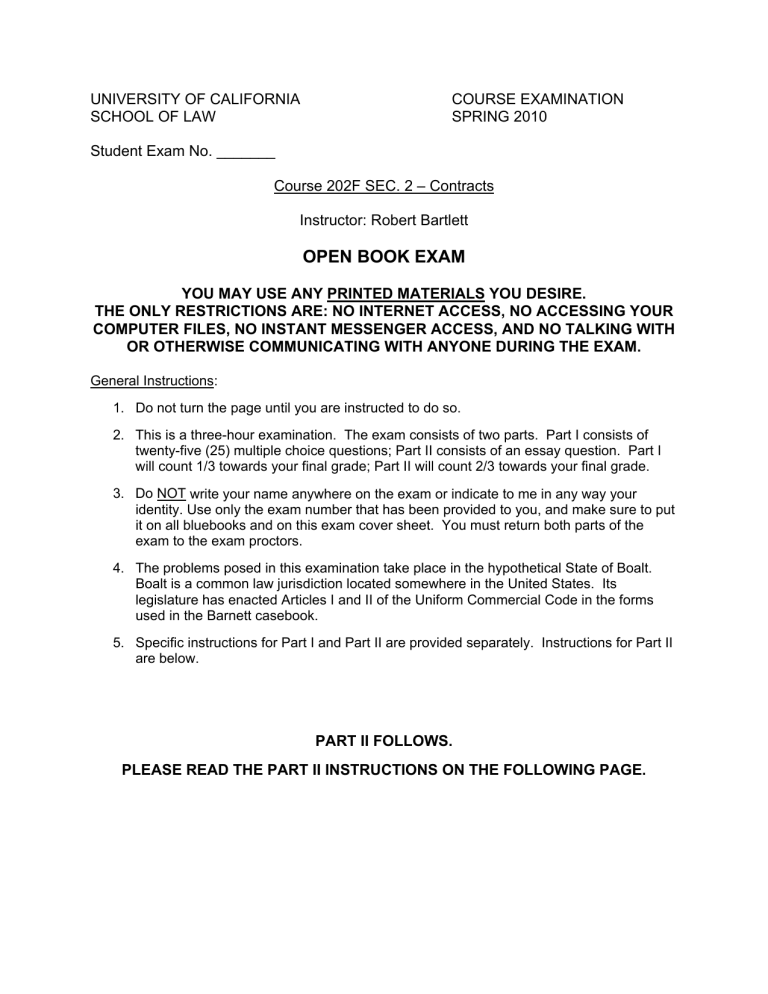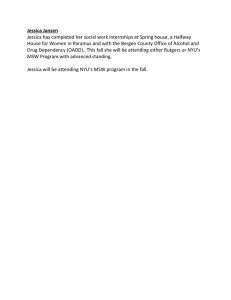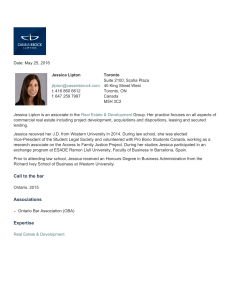
UNIVERSITY OF CALIFORNIA SCHOOL OF LAW COURSE EXAMINATION SPRING 2010 Student Exam No. _______ Course 202F SEC. 2 – Contracts Instructor: Robert Bartlett OPEN BOOK EXAM YOU MAY USE ANY PRINTED MATERIALS YOU DESIRE. THE ONLY RESTRICTIONS ARE: NO INTERNET ACCESS, NO ACCESSING YOUR COMPUTER FILES, NO INSTANT MESSENGER ACCESS, AND NO TALKING WITH OR OTHERWISE COMMUNICATING WITH ANYONE DURING THE EXAM. General Instructions: 1. Do not turn the page until you are instructed to do so. 2. This is a three-hour examination. The exam consists of two parts. Part I consists of twenty-five (25) multiple choice questions; Part II consists of an essay question. Part I will count 1/3 towards your final grade; Part II will count 2/3 towards your final grade. 3. Do NOT write your name anywhere on the exam or indicate to me in any way your identity. Use only the exam number that has been provided to you, and make sure to put it on all bluebooks and on this exam cover sheet. You must return both parts of the exam to the exam proctors. 4. The problems posed in this examination take place in the hypothetical State of Boalt. Boalt is a common law jurisdiction located somewhere in the United States. Its legislature has enacted Articles I and II of the Uniform Commercial Code in the forms used in the Barnett casebook. 5. Specific instructions for Part I and Part II are provided separately. Instructions for Part II are below. PART II FOLLOWS. PLEASE READ THE PART II INSTRUCTIONS ON THE FOLLOWING PAGE. Instructions for Part II (essay): 1. You will have two hours with which to answer the question posed in Part II. There are no word or page limits for Part II. 2. If you are writing your exam, please write legibly, double-spaced, on the right-hand side of each page only (after-inserts should go on the left-hand side). 3. Should you find it necessary in answering a question to assume a fact not given in the question as stated, you may do so; but you should clearly indicate that you are making an assumption, and should briefly explain why you consider it a reasonable assumption to make. Likewise, if you believe that there is a significant typographical error or ambiguity in the exam, address it explicitly in your answer. For example, note what you believe to be the ambiguity and the understanding on which you are proceeding in answering the question. Do not ask about it during the exam. 4. The question in Part II is designed to test the application of the legal knowledge and analytical tools we have studied in the course. Please take time to work through and organize your analysis before beginning to write. The question is intentionally fairly difficult and cannot be answered well without careful thought beforehand. Clarity of thought will be heavily rewarded in grading; sloppiness of thought and excessive verbiage will be penalized. 5. Part II consists of three (3) numbered pages following this instruction sheet. Please ensure that you have all three pages before you commence writing. PART II Sent: Thu 5/6/2010 7:56 AM From: TO: CC: Subject: Senior Partner Junior Associate Jessica Morgan Thanks for agreeing to help me with the Jessica Morgan case. As I mentioned earlier, I have outlined below the information Jessica provided to me regarding her current dispute. I will be meeting with Jessica tomorrow morning and would really appreciate it if you could provide me with a preliminary assessment of her situation by the close of business today. Please be sure to point out any liabilities she might have, as well as any claims we might consider bringing. If you think we need more information from Jessica, please let me know that also. I’ll have a chance to ask her questions tomorrow. Jessica’s problems began in early 2009 when she inherited a parcel of land from her parents. Her father and mother originally purchased the land in 2008 with the intention of building their dream home on it, but they both passed away before they had the chance pursue the project. So upon acquiring the beachfront property, Jessica began considering ways in which she could realize her parents’ dream. Additionally, Jessica had independently been considering a move from her apartment in the city to a larger, more tranquil place in the country. Jessica is a novelist as well as a prodigious book collector and her impressive book collection had long ago overwhelmed her four-bedroom apartment. In fact, she has been renting space at $350/month to warehouse her books for the past three years. The land inheritance gave her the idea of constructing a new oceanfront home that would be capable of housing her enormous collection of books, while at the same time paying homage to her parents’ dream. Not knowing where to turn to begin building her new home, Jessica inquired with some of her future neighbors regarding their oceanfront houses. She was surprised to find that most of the beautiful beach homes in her neighborhood were modular houses built by a company called OceanSide Homes. As you may know, a modular home—also known as a “prefabricated” home—is built in assembly-line fashion at the builders’ assembly plant before being transported to a home site in units (or “modules”) which are then assembled on a pre-set foundation. Given that modular homes are offered with pre-set, defined configurations, Jessica always thought of modular homes as cheap “cookie cutter” houses and had no idea they could be so elaborate and large (many of the homes were over 5,000 square feet). Moreover, all of the houses on Simpson Beach were required to be built on fifteen foot pilings (or stilts) because of the high risk of storm surges along the coastline. Jessica assumed this requirement would prohibit the construction of oceanfront modular homes, but OceanSide had solved this problem by partnering with a local contractor called American Foundation. When OceanSide started manufacturing a house, American Foundation would pour a foundation for it that was custom-tailored to fit the house’s design. Jessica met with Dusty Denver, OceanSide’s Vice President of Sales, in June 2009 about the possibility of designing a home for her property. Mr. Denver took Jessica on a tour of several 1 OceanSide model homes, and Jessica was impressed with their quality and elegance. After reviewing the various floor plans available from OceanSide, Jessica and Dusty settled on a twostory house design that represented a combination of different models. The house was to have six bedrooms all located on the first floor, with a kitchen, living room, dinning room, movie theater, and an extensive library on the second floor to take advantage of the beautiful ocean views. Jessica tells me that she and Mr. Denver discussed at length the specifications of the library and whether the design could support the enormous weight of her book collection. Denver assured her that all OceanSide homes were “top of the line” and he didn’t see why the house couldn’t support it. Satisfied, Jessica entered into OceanSide’s standard form contract on June 30, 2009. Jessica tells me the agreement was simple (I have not yet seen it). First, it provided for the construction of the house according to the specifications discussed between Jessica and Denver (blue prints were attached to the agreement as an exhibit). Next, the agreement provided that the foundation would be laid by American Foundation on or before November 15, 2009 and delivery of the house would occur on or before December 1, 2009. The total purchase price (including the cost of the house and all foundation work) was $400,000, of which Jessica paid $100,000 upon signing the contract. The remainder was to be paid in equal annual installments of $30,000 over the next ten years, commencing on the day she took delivery of the house. The rest of the agreement she informs me was just “boilerplate” legalese. Construction of the house began shortly after the execution of the contract, and Jessica was initially quite pleased with the process. In fact, Jessica made several visits to OceanSide’s manufacturing facility where she oversaw the house’s construction. During the construction of the library, she raised again with Mr. Denver her concern about the weight of her book collection, but he confirmed that he saw no reason for alarm. Problems arose in July, however, when OceanSide’s workers unexpectedly went on strike. The strike lasted for over a month and caused OceanSide to become significantly behind schedule in its construction contracts. On August 26, Denver called Jessica and informed her of OceanSide’s new production schedule. He told her that due to the strike, delivery of the house would not be possible until March 30, 2010; however, construction of the foundation would occur as scheduled. Although disappointed with the news, Jessica agreed to the revised delivery date. After this, things continued to deteriorate for Jessica’s plans. In particular, Hurricane Denise struck shortly after she spoke with Denver, causing Jessica to reconsider her plans for moving to Simpson Beach. Although Simpson Beach was not directly hit by the hurricane, the devastation it caused to nearby towns forced Jessica to realize how risky it was to live on oceanfront property. Moreover, the hurricane caused real estate values in Simpson Beach to drop 25% . For these reasons, Jessica decided after the hurricane that she would simply stay in her current residence and put the house up for sale once it was completed. The foundation for the house was laid on November 10, 2009, and on March 25, 2010 Denver and his crew arrived to install the six modules that created the basic structure of the house. From March 25 through March 29, Denver’s crew placed the modules on the foundation, joined the modules together, and attached the roof to the main structure. Notwithstanding her worries, Jessica couldn’t help but be amazed at the speed with which the house was assembled. She was 2 also extremely pleased with its quality. It was every bit as elegant as the models that she had seen at the factory. After completing a final walkthrough inspection on March 30, she therefore signed a “completion slip” that contained the following language: WARNING TO BUYER: DO NOT SIGN THIS CERTIFICATE UNTIL ALL SERVICES HAVE BEEN SATISFACTORILY PERFORMED AND MATERIALS SUPPLIED OR GOODS RECEIVED AND FOUND SATISFACTORY This is to advise that the home which I purchased from OceanFront Homes, Inc., has been built according to contract and the work completed to my satisfaction. I have inspected the house thoroughly and hereby advise you that there is no further work to be done nor any materials or fixtures to be supplied and that OceanFront Homes, Inc., has fully fulfilled its contractual obligations. Upon taking possession of the house, Jessica immediately put the property up for sale. In the course of preparing the house for sale, however, she had it appraised and inspected by a structural engineer. On the outside chance that she might change her mind and decide to keep the house, she asked him to confirm the load-bearing capacity of the second-floor library. She was shocked to hear that while the load-bearing capacity of the second floor met industry standards for residential homes, he told her “there was no way in our physical universe” it could support the weight of her enormous book collection, which he estimated to be the equivalent of three mid-sized cars. In fact, for the second-floor to support such weight, he informed her that it would be necessary to rebuild all of the load-bearing walls—an expense of approximately $200,000. But he also concluded that this renovation would have no effect on the market price of the house, given that few (if any) prospective residential buyers would pay a premium price for what would be a useless feature to most homeowners. Outraged, Jessica refused to make even her first installment payment on the house and informed Denver that she would not make any payments at all until he repaired the house. OceanFront’s lawyer has informed Jessica that unless she commences her payments, they will sue her for the unpaid balance due on the house. [End of Part II] 3




